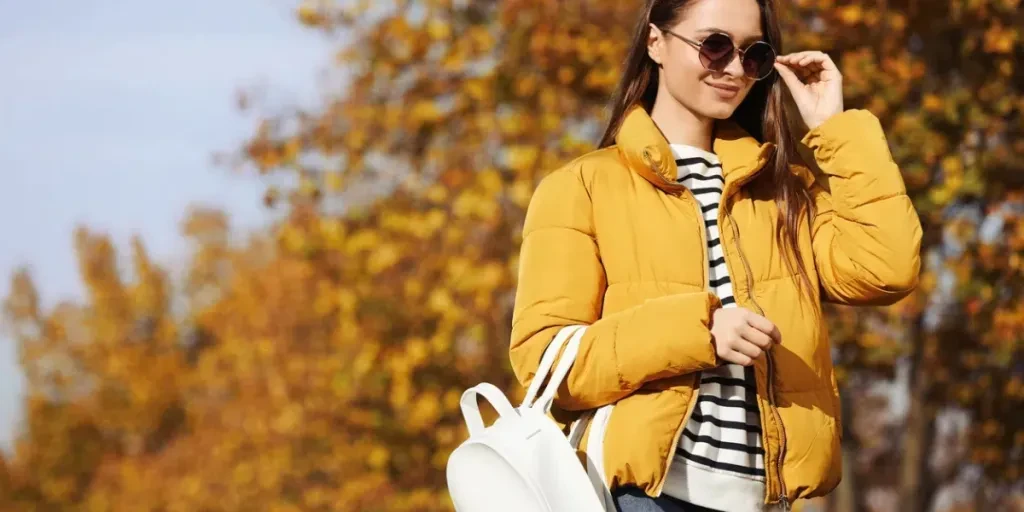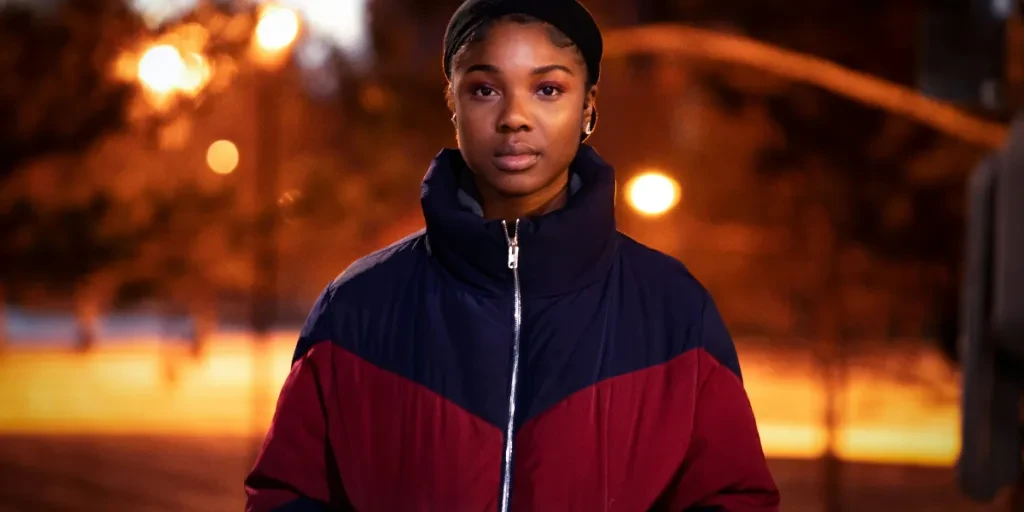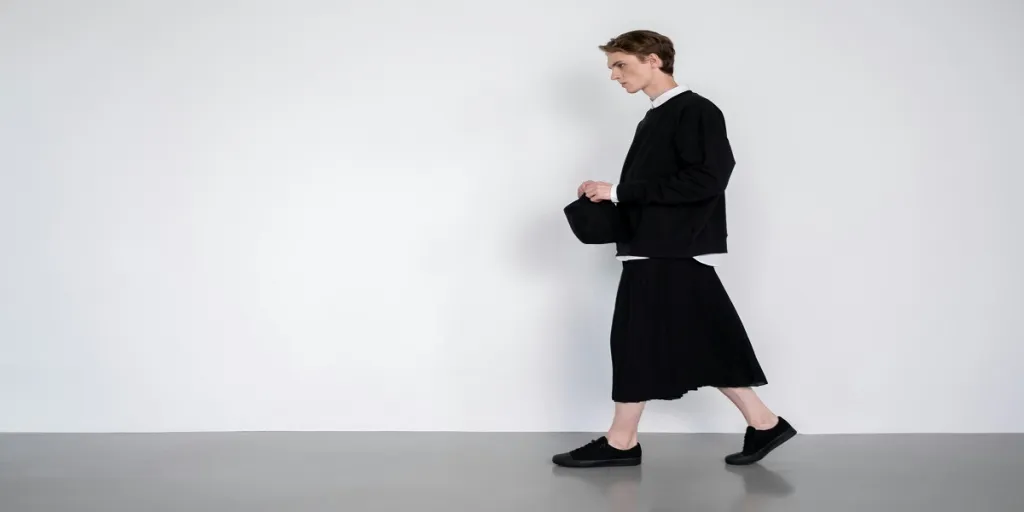Woven jackets have become a staple in the apparel industry, offering a blend of style, comfort, and functionality. As the demand for versatile outerwear continues to rise, woven jackets are gaining popularity among consumers worldwide. This article delves into the market trends, key players, and future insights of woven jackets, providing a comprehensive overview of this essential wardrobe item.
Table of Contents:
– Market Overview: The Rising Demand for Woven Jackets
– Materials and Fabrics: The Backbone of Quality Woven Jackets
– Natural vs. Synthetic: Choosing the Right Fabric
– Sustainable Materials: Eco-Friendly Options in Woven Jackets
– Design and Cut: Crafting the Perfect Woven Jacket
– Classic vs. Contemporary: Design Trends in Woven Jackets
– Tailoring and Fit: The Importance of a Well-Cut Jacket
– Patterns and Textures: Adding Character to Woven Jackets
– Popular Patterns: From Plaid to Houndstooth
– Texture Trends: Smooth, Quilted, and Everything in Between
– Seasonality and Functionality: Woven Jackets for Every Occasion
– Seasonal Adaptations: Lightweight vs. Heavyweight Jackets
– Functional Features: Pockets, Linings, and More
Market Overview: The Rising Demand for Woven Jackets

The global market for woven jackets is experiencing significant growth, driven by various factors such as changing fashion trends, increasing consumer awareness about sustainable materials, and the rising popularity of outdoor activities. According to a report by Research and Markets, the global down jacket market, which includes woven jackets, grew from USD 207.30 million in 2023 to USD 220.32 million in 2024. It is expected to continue growing at a CAGR of 6.37%, reaching USD 319.58 million by 2030.
One of the key drivers of this growth is the increasing demand for high-quality, durable outerwear that offers excellent insulation and comfort. Woven jackets, known for their lightweight warmth and versatility, cater to a broad spectrum of consumers seeking both functionality and style. Technological advancements in fabric manufacturing have also played a crucial role in enhancing the performance of woven jackets, making them more water-resistant and improving their warmth-to-weight ratio.
Regional insights reveal that the demand for woven jackets varies significantly across different parts of the world. In the Americas, countries like Canada and the northern United States see high demand for woven jackets due to their cold weather conditions, particularly in the fall and winter seasons. Brands that emphasize sustainability and ethical sourcing of materials are gaining traction among environmentally conscious consumers in these regions.
In the EMEA region, the market for woven jackets is diverse due to the wide range of climates and cultures. Northern European countries, such as Sweden and Norway, have a strong demand for high-quality, warm woven jackets that combine functionality and sustainability. In contrast, the Middle East exhibits a much lower demand for woven jackets due to its hot desert climate, although there is a niche market for luxury woven jackets as fashion statements.
The Asia-Pacific region is rapidly emerging as a significant market for woven jackets, driven by the economic growth of countries such as China and India. In East Asian countries, especially China, Japan, and South Korea, there is a substantial market for both functional and fashion-oriented woven jackets. The rise in outdoor activities and sports has also propelled the demand for lightweight and packable woven jackets. The APAC market is distinguished by its openness to innovation, with consumers interested in new technologies such as water-resistant fabrics and eco-friendly materials.
Key players in the woven jacket market include well-known brands such as Adidas AG, Columbia Sportswear Company, and H&M Hennes & Mauritz AB. These companies are continuously innovating to meet the evolving demands of consumers, focusing on sustainable and ethical sourcing of materials, improved product performance, and innovative recycling processes. For instance, UK-based startup Saltyco has introduced BioPuff, a groundbreaking bulrush-based insulation for puffer jackets, offering an environmentally friendly alternative to traditional fill materials.
Materials and Fabrics: The Backbone of Quality Woven Jackets

Natural vs. Synthetic: Choosing the Right Fabric
The choice of fabric is crucial in determining the quality and functionality of woven jackets. Natural fabrics such as cotton, wool, and linen are often favored for their breathability, comfort, and sustainability. Cotton, for instance, is a versatile fabric that can be used in both lightweight and heavyweight jackets, making it suitable for various seasons. Wool, known for its excellent insulation properties, is ideal for colder climates. Linen, on the other hand, is perfect for summer jackets due to its lightweight and breathable nature.
Synthetic fabrics like polyester, nylon, and acrylic offer different advantages. Polyester is highly durable, resistant to shrinking and stretching, and dries quickly, making it a popular choice for outdoor and sports jackets. Nylon is known for its strength and water resistance, often used in windcheaters and rain jackets. Acrylic, while less common, provides a wool-like feel and is often used in blends to enhance the fabric’s properties.
Sustainable Materials: Eco-Friendly Options in Woven Jackets
Sustainability is becoming increasingly important in the fashion industry, and woven jackets are no exception. Eco-friendly materials such as organic cotton, recycled polyester, and Tencel are gaining popularity. Organic cotton is grown without harmful pesticides and chemicals, making it a healthier option for both the environment and the wearer. Recycled polyester, made from post-consumer plastic bottles, helps reduce waste and energy consumption. Tencel, derived from sustainably sourced wood pulp, is biodegradable and has a lower environmental impact compared to traditional fabrics.
According to a professional report, brands like Woolrich Black Label by Todd Snyder and Louis Vuitton are incorporating sustainable materials into their collections, reflecting a growing trend towards eco-conscious fashion. These materials not only reduce the environmental footprint but also appeal to consumers who are increasingly aware of the impact of their purchases.
Design and Cut: Crafting the Perfect Woven Jacket

Classic vs. Contemporary: Design Trends in Woven Jackets
Design trends in woven jackets often oscillate between classic and contemporary styles. Classic designs, such as the trench coat and bomber jacket, have stood the test of time due to their timeless appeal and versatility. The trench coat, for instance, is a staple in both men’s and women’s wardrobes, offering a sophisticated and polished look. The bomber jacket, originally designed for military pilots, has evolved into a fashion icon, adaptable to various styles and occasions.
Contemporary designs, on the other hand, push the boundaries of traditional fashion. Modern interpretations of classic styles often incorporate innovative materials, bold colors, and unique details. For example, the S/S 25 collections showcased by brands like Dior Men and Amiri featured reworked classics with intricate embellishments, retro patterns, and workwear detailing. These modern renditions cater to consumers looking for fresh and unique pieces that stand out.
Tailoring and Fit: The Importance of a Well-Cut Jacket
The fit and tailoring of a woven jacket are paramount to its overall appeal and functionality. A well-cut jacket enhances the wearer’s silhouette, providing a flattering and comfortable fit. Tailoring techniques such as darting, shaping seams, and structured shoulders contribute to a polished and refined look.
The S/S 25 collections emphasized the importance of tailoring and fit, with brands like Paul Smith and Canali showcasing impeccably tailored jackets. These pieces not only offer a perfect fit but also incorporate functional features such as adjustable cuffs, drawstring waists, and articulated sleeves, enhancing both style and comfort.
Patterns and Textures: Adding Character to Woven Jackets

Popular Patterns: From Plaid to Houndstooth
Patterns play a significant role in adding character and visual interest to woven jackets. Classic patterns such as plaid, houndstooth, and checks are perennial favorites, offering a timeless and sophisticated look. Plaid, with its rich history and versatility, can be dressed up or down, making it suitable for various occasions. Houndstooth, known for its distinctive broken check pattern, adds a touch of elegance and sophistication to any jacket.
Contemporary patterns, such as geometric prints and abstract designs, are also gaining popularity. These bold and eye-catching patterns offer a modern twist to traditional styles, appealing to fashion-forward consumers. The S/S 25 collections featured a mix of classic and contemporary patterns, with brands like Hermès and Louis Vuitton showcasing innovative designs that push the boundaries of traditional fashion.
Texture Trends: Smooth, Quilted, and Everything in Between
Texture is another important element in the design of woven jackets. Smooth and sleek fabrics offer a polished and refined look, while textured materials such as quilted fabrics, tweed, and corduroy add depth and dimension. Quilted jackets, for instance, provide both warmth and style, making them a popular choice for colder seasons. Tweed, with its rich texture and durability, offers a classic and sophisticated look. Corduroy, known for its distinctive ribbed texture, adds a touch of vintage charm to any jacket.
Seasonality and Functionality: Woven Jackets for Every Occasion

Seasonal Adaptations: Lightweight vs. Heavyweight Jackets
Woven jackets are designed to cater to different seasons and weather conditions. Lightweight jackets, made from breathable fabrics such as cotton and linen, are perfect for spring and summer. These jackets offer comfort and style without compromising on functionality. Heavyweight jackets, on the other hand, are designed for colder seasons, providing warmth and protection against the elements. Fabrics such as wool, tweed, and quilted materials are commonly used in heavyweight jackets, offering both insulation and durability.
The S/S 25 collections showcased a range of seasonal adaptations, with brands like Woolrich Black Label by Todd Snyder and Louis Vuitton offering both lightweight and heavyweight options. These pieces cater to the diverse needs of consumers, ensuring that there is a woven jacket for every occasion.
Functional Features: Pockets, Linings, and More
Functionality is a key consideration in the design of woven jackets. Practical features such as pockets, linings, and adjustable elements enhance the usability and versatility of the jacket. Pockets, for instance, provide convenient storage for essentials, while linings offer additional warmth and comfort. Adjustable cuffs, drawstring waists, and removable hoods allow for a customizable fit, catering to the wearer’s preferences and needs.
Conclusion
The woven jacket continues to evolve, blending classic styles with contemporary innovations to meet the diverse needs of modern consumers. As the fashion industry moves towards sustainability, the use of eco-friendly materials and ethical practices will become increasingly important. With a focus on quality fabrics, impeccable tailoring, and functional features, woven jackets will remain a staple in wardrobes for years to come, offering both style and practicality for every occasion.




